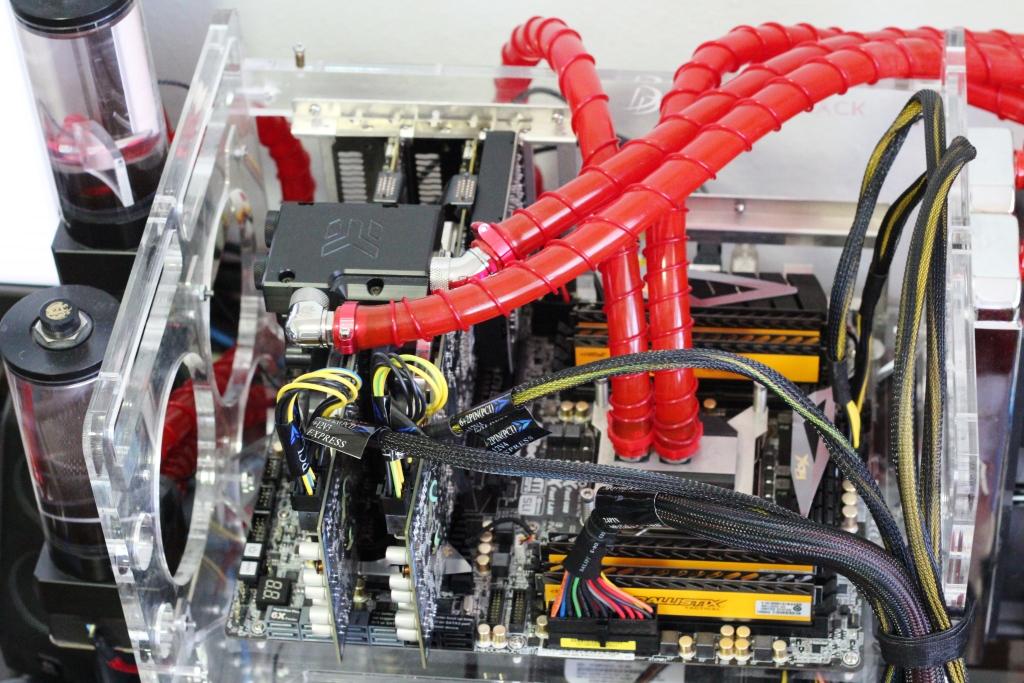TESTING METHODOLOGY
 Our testing methodology is explained in-depth in our SSS Enterprise Test Protocol article that can be found by hitting the link. We utilize the X79 Patsburg (Chipset) in tandem with a LSI 9211-8i under the Windows Server 2008 R2 operating system. The LSI 9211 allows us a stable platform that is relatively free from wild driver changes that motherboard chipsets are subjected to. We utilize several key considerations of the industry-accepted SNIA Specification for our testing.
Our testing methodology is explained in-depth in our SSS Enterprise Test Protocol article that can be found by hitting the link. We utilize the X79 Patsburg (Chipset) in tandem with a LSI 9211-8i under the Windows Server 2008 R2 operating system. The LSI 9211 allows us a stable platform that is relatively free from wild driver changes that motherboard chipsets are subjected to. We utilize several key considerations of the industry-accepted SNIA Specification for our testing.
The performance of Enterprise SSDs has to be conducted at Steady State levels. This can be accomplished only by placing the drive under a very heavy workload over an extended period of time. Simply writing the capacity of the SSD several times will not suffice, as there are many factors that must be taken into consideration when attaining true Steady State.
Steady State can vary based upon the workload and the type of data access that is being placed upon the SSD. There is a profound difference between sequential and random data loadings, and also between various read/write mixed percentage workloads. The first requirement is to assure that 2 steps are taken to assure Steady State under very specific circumstances.
PRECONDITIONING
Preconditioning is the process of putting the SSS (Solid State Storage) under different loading scenarios that will facilitate conditions that will place the drive into Steady State. Preconditioning takes place after the SSS has been Secure Erased, and the device is FOB (Fresh Out of Box). There are two steps to Preconditioning;
Workload Independent Preconditioning (WIP)
The Definition per SNIA:
The technique of running a prescribed workload, unrelated, except by possible coincidence, to the test workload, as a means to facilitate convergence to Steady State.
The first execution of each profile will be logged as FOB (Fresh Out of Box) performance. All QD will be executed for all profiles for 60 Seconds and logged. This will be followed by QD 32 for each profile until Steady State Convergence has been attained.
Workload Based Preconditioning (WBP)
The Definition per SNIA:
The technique of running the test workload itself, typically after Workload Independent Preconditioning, as a means to put the device in a Steady State relative to the dependent variable being tested.
Each profile will be executed again, in order, at QD32, until Steady State Convergence is achieved for that respective workload. Once within the Measurement Window, Steady State Performance will be logged following the guidelines above.
Over Provisioning Steady State
As our final round of testing, we will apply 20% over provisioning to the respective device to test performance. Over provisioning (OP) is the practice of leaving large amounts of unformatted spare area on the device to increase performance and endurance under very demanding workloads.
STEADY STATE CONVERGENCE VERIFICATION
After each round of Preconditioning has been accomplished, there must be a logging of performance data to assure that Steady State has been achieved for both. Only after the second round of WBP Steady State Convergence has been achieved, should the measurement of SSD performance begin.
Steady State as Defined by SNIA:
A device is said to be in Steady State when, for the dependent variable (y) being tracked:
- Range(y) is less than 20% of Ave(y): Max(y)-Min(y) within the Measurement Window is no more than 20% of the Ave(y) within the Measurement Window.
- Slope(y) is less than 10%: Max(y)-Min(y), where Max(y) and Min(y) are the maximum and minimum values on the best linear curve fit of the y-values within the Measurement Window, is within 10% of Ave(y) value within the Measurement Window.
We use all 8 of our IOMeter profiles for both levels of preconditioning, and also for measurement of performance once within the measurement window.
 The SSD Review The Worlds Dedicated SSD Education and Review Resource |
The SSD Review The Worlds Dedicated SSD Education and Review Resource | 

Thanks for the detailed report. Can you compare/contrast this with the OWC enterprise drive, which is 1700 vs 6000 for the Toshiba. Is it worth 3 times the price? I do see the attention they paid to heat and don’t know if OWC has done the same homework, but the OWC drive does use an enterprise SandForce chip which should have the same features as the Marvell.
Awaiting arrival of the OWC SSD.
I guess the price difference is SLC vs eMLC, (correct me if I’m wrong) and their additional work on putting it together really well in terms of the heat dissipation. But in real terms I guess this comes down to longevity? It would be very interesting if you could do some applied but theoretical analysis of longevity comparisons. For example, if serving a database or web server with x writes and y reads per day how long would each last? I think the SLC is in the millions so that can be counted on for 5 yrs+ but the question is, with the features of the enterprise SF chip, what life can be expected there? The speed should be comparable, maybe with a slight bump for this drive in IOPS.